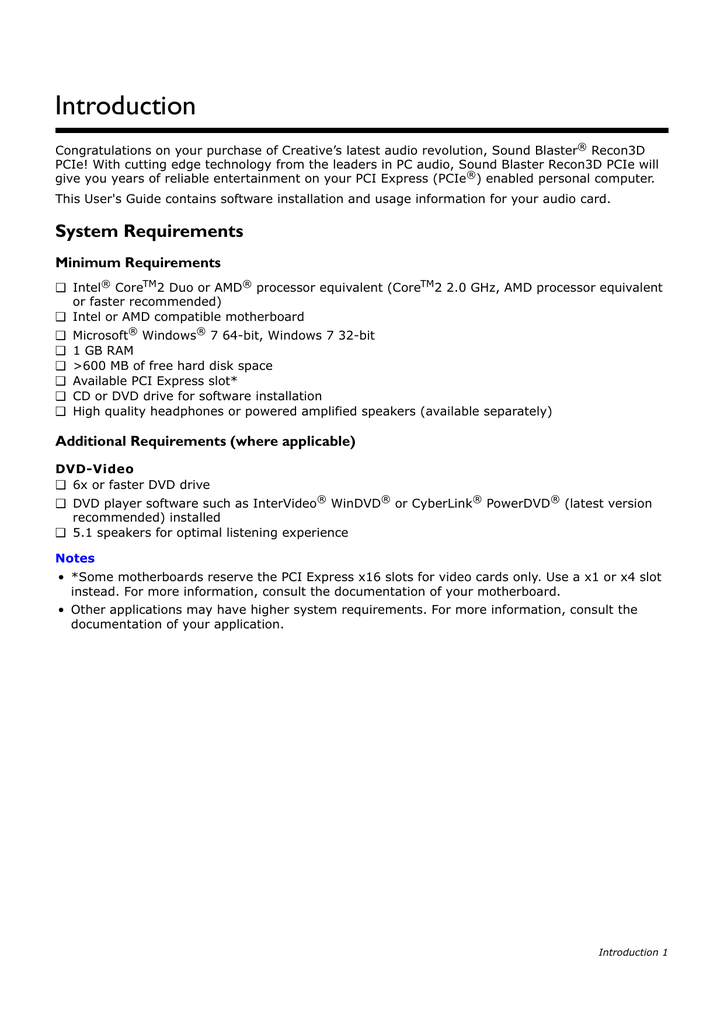
- #Sound blaster software recon manual#
- #Sound blaster software recon software#
- #Sound blaster software recon Pc#
I had some problems using ASIO in ReNoise. The central “Sound Core3D” chip CA0132 is visually also quite unimpressive and visible after removing the square cover.Īdditionally there is also the tool “Creative ALchemy” again which you can use for older game titles using EAX to provide an emulation using OpenAL. In fact there is also a “bulk” version available which does not have the metal cover and the led lights but provides the same sound quality. The visual design is mostly “show” and technically not really neccessary. Resolution: 24 bit, 96 khz sampling frequency (192 khz for stereo playback).Number of audio channels: stereo or surround sound 5.1.This converter is also responsible for the high signal to noise ratio (SNR) which was also lower in the predecessor. The analogue part is supported by an additional D/A converter by Cirrus Logic which wasn’t used yet in the predecessor “Recon 3D”. The features are mostly provided by the central audio processor.
#Sound blaster software recon software#
In fact it is a stereo microphone and the software of the sound card will suppress all sound which mostly comes from the left or from the right. The provided microphone is intended to be used on top of a display and supports an adjustable angle for recording.
#Sound blaster software recon Pc#
Internally there is an additional connector for HD audio front panels which can be found in some PC cases. So you don’t need any external switch and the headphones stay turned off when you don’t need them. Very practical: You can leave headphones or headsets connected and change between the regular outputs or the headphones using the software.

All the following pictures are also available at a larger version – just click/tap them.
#Sound blaster software recon manual#
In the scope of delivery of the Creative Sound Blaster Z you will find the sound card itself, an external microphone besides software and a brief manual with a list of the connections. A separate sound card often provides a better sound quality, sometimes more connection possibilities and often also more possibilities on the software side. Many manufacturers use a chip by Realtek so the software is also quite simple. Often you have to deal with background noise or an irregular frequency response, especially compared to other devices for audio playback. But these data don’t tell how good the sound will be at the end on the analog outputs. After that the “Sound Blaster Z” followed in 2012 which is also available in different models and which is still available unchanged today in the year 2015.įor a long time integrated solutions on mainboards already provide HD audio with a resolution of 24 bit and 96 kHz sampling frequency and often at least 5.1 surround sound. The first sound card with this chip was the “Recon 3D” in different variations for a PCI express slot.

Finally in May 2011 the so far newest invention by Creative Labs was presented: “Sound Core3D” – an audio processor with four cores (also see the presse release about this). First there was the change from 8 to 16 bit with the “Sound Blaster 16”, then followed by the AWE 32/64, Live!, Audigy and X-Fi. Since then more than 25 years passed and the technology has developed accordingly. It was already in the year 1989 when Creative Labs presented a soundcard with the name “Sound Blaster”.


 0 kommentar(er)
0 kommentar(er)
